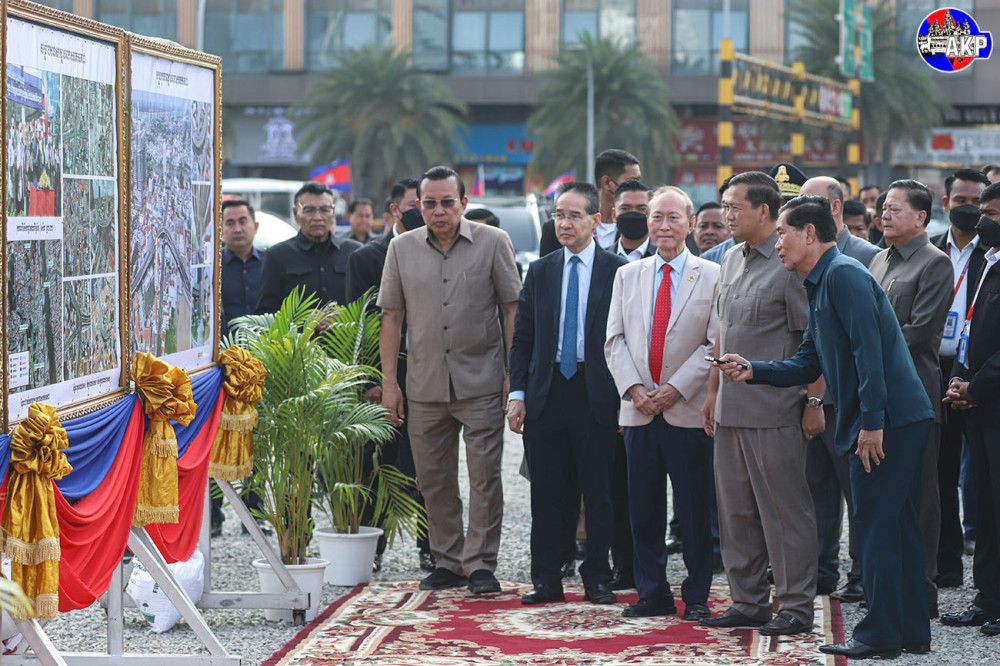Phnom Penh marked a major milestone today with the official inauguration of the two-story Morodok Techo Flyover at Kbal Thnal, under the presidency of Prime Minister Samdech Moha Borvor Thipadei Hun Manet. This new structure stands as a symbol of Cambodia’s growing self-reliance in infrastructure development.

In his remarks during the ceremony, Samdech Thipadei Hun Manet praised the achievement and highlighted the pride of the Cambodian people in realizing such a large-scale project. He emphasized that the project reflects the country’s advancing technical capabilities and dedication to modernizing its urban landscape.
Located at a key junction that includes Samdech Techo Hun Sen Boulevard, Preah Monivong Boulevard, and Royal Cambodian Armed Forces Boulevard, the flyover spans the bustling areas of Khan Meanchey and Chamkar Mon. It is expected to play a critical role in decongesting one of the capital’s busiest intersections.
A 30-Month Achievement, Ahead of Schedule
According to Phnom Penh Municipal Governor H.E. Khuong Sreng, the construction began on August 31, 2022, and impressively finished six months ahead of schedule. The entire project was completed in just 30 months, at a total cost of nearly US$36.8 million.
The governor stated that the flyover is a vital piece of Phnom Penh’s urban planning strategy. It is designed to enhance the connectivity between the city and key national routes, notably National Roads 1 and 2, which serve as economic lifelines to nearby provinces.
Not only is the flyover intended to ease traffic congestion in the city’s southern sector, but it will also facilitate smoother travel for commuters and transporters. This improved access is expected to support economic growth and attract greater investment into the region.
Enhancing Access to Major Projects and Investments
Beyond its immediate traffic benefits, the Morodok Techo Flyover strengthens connections to major infrastructure developments. These include the upcoming new international airport and the ambitious Funan Techo Canal project, both of which are integral to the city’s expansion and economic competitiveness.
With increased accessibility, the city is poised to become even more attractive to both local entrepreneurs and foreign investors. Officials believe this will create a ripple effect, stimulating further development in and around the capital.

Phnom Penh now boasts a growing network of modern flyovers. Previous structures include the Kbal Thnal Flyover (2010), January 7 Flyover (2012), Stung Meanchey (2014), January 5 (2016), Stop Psar Dey Hoy (2018), Chom Chao (2022), and Russey Keo (2023).
The addition of the Morodok Techo Flyover marks another step forward in the city’s commitment to smart urban planning and infrastructure development, promising a more connected and competitive future for Phnom Penh.

Leave a Reply